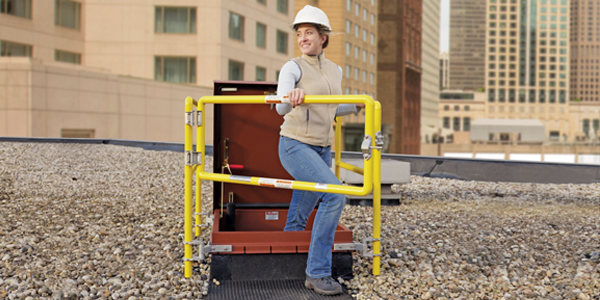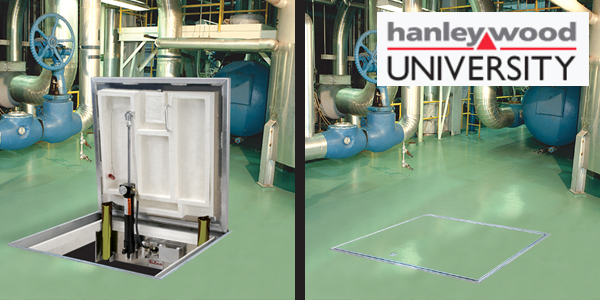The BILCO Company offers a number of training courses that provide continuing education for architects and construction professionals. Please contact us if you would like to receive a live or virtual lunch and learn on any of these topics.
Roof Hatches Simplified
Understanding how building codes and standards impact the specification of roof hatches, especially regarding fire protection and safety.

Learning Objectives:
- Explain the function and benefits of roof hatches for commercial buildings and their safety requirements.
- Describe the different styles of roof hatches and common applications.
- Discuss how building codes and standards impact the specification of roof hatches, especially regarding fire protection and safety.
- Identify key features of modern roof hatches that can impact the energy efficiency of a building.
- Learn about the future and growing trends for roof hatch products.
Best Practices and Code Considerations for Specifying Fire Rated Floor Doors
This course will discuss construction access products, the difference between active and passive fire protection, and how fire-rated floor doors provide passive protection.

Learning Objectives:
- Examine how construction access products are used in commercial building applications and the importance of passive fire protection systems.
- Learn how floor fire doors and access doors are used for fire-rated applications and the differences between products available on the market.
- Identify the key features to look for when specifying floor doors for fire-rated applications.
- Understand the applicable fire protection codes that apply to the use of floor access doors in fire rated applications.
- Explore applications for fire-rated floor doors and a case study where they were used in a massive rail station project.
Designing Roofs for Life Safety and Sound Isolation
Explore expert insights on how to specify sound-rated automatic smoke vents

Learning Objectives:
Summarize how automatic smoke vents work in response to a fire event and how they modify the way that a fire progresses through a burning building.
-
Select the appropriate noise-measuring metric to evaluate the sound-buffering performance of building facade products that need to mitigate noise made from airplanes, construction activities, and traffic.
-
Explain the ways that automatic smoke vents are required to be incorporated into a design by the standard NFPA 204, authored by the National Fire Protection Association (NFPA), the 2018 International Building Code, and the International Fire Code (IFC).
-
Describe the many ways that automatic smoke vents offer better protection for people, firefighters, and property in the event of a fire.
Fighting Fires and Saving Lives Large, Single in One-Story, Undivided Buildings
A closer look at the need to incorporate automatic smoke vents into these designs

Learning Objectives:
Explain why using automatic smoke vents in large, single-story, undivided buildings became common after the 1953 General Motors fire and the standard that was developed to guide the design of these life-safety systems.
Understand how automatic smoke ventilation changes the development of a fire in large, single-story, undivided buildings, and the benefits that this fire- and life-safety product provides.
-
Identify the applicable fire- and life-safety codes that dictate the use of automatic smoke ventilation.
Specify the automatic smoke vent that is best suited for the unique needs of a project


